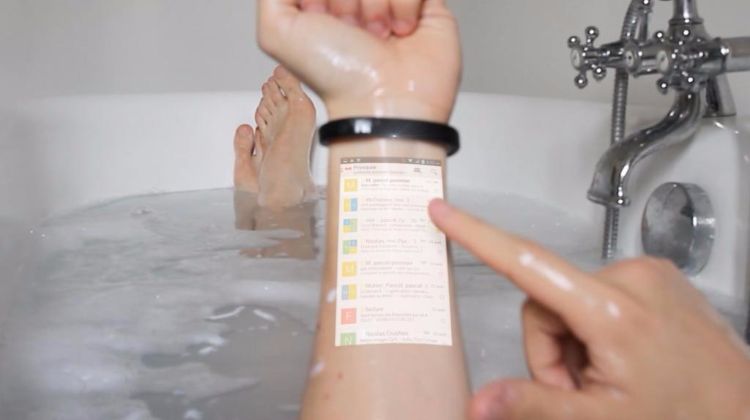With an antenna dangling over his forehead, Neil Harbisson states:
“I hear colors and enjoy listening to Antoni Gaudí’s architecture”.
It might sound like an opening scene of a sci-fi movie, but this is INDEED the reality.
Neil suffers from a rare form of colorblindness called achromatopsia – means he sees the world in grays. His device, an electronic eye he refers to as the eyeborg, makes him capable of experiencing colors beyond the scope of normal human cognizance.
The sensor-enabled wearable renders perceived colors as sounds on the musical scale – in other words, it allows him to “hear” color. He has become so adapted to it that his brain has formed new neural pathways that allow him to develop an advanced kind of perception.

“At the start, I had to memorize the names you give to each color and I had to memorize the notes, but after some time, all this information became a perception. When I started to dream in color, I felt the software and my brain had united. People will soon start becoming technology,” said the human cyborg in a recent TED talk.
And we are sure Neil is only the beginning.
The Perfect Fusion: When Sensor Becomes the Sense
Just look around.
The current collection of wearable products has brought about a widescale technological revolution with many players offering some innovative, lifestyle-disruptive and next-generation features. From super smart watches to fitness trackers, not to mention heart-rate monitors and electronic pills, wearable technology has proven to be quite versatile.
But the technology is in a transition mode. It is on a move from existing outside our bodies to residing inside us. The next big frontier wearable sensors will move the whole computational interface inside our bodies. Hail thee, the all new Implantables!
Smart tattoos
Tattoos are hip and seemingly ubiquitous, so why not have digital tattoos that not only look cool but can also perform useful tasks like unlocking your car or entering mobile phone codes with a finger-point?
A company called Dangerous Things has developed an NFC chip that can be embedded in a finger through a tattoo-like process, letting you unlock things simply by pointing. A much better choice than your soon to be ex’s name!
Implantable birth control chip
The Gates Foundation is supporting an MIT project to create an implantable female compu-contraceptive controlled by an external remote control. The tiny chip generates small amounts of contraceptive hormone from within the woman’s body for up to 16 years.
Implantable smartphones
Sure, we’re virtually connected to our smartphones 24/7 now but what if we were actually physically connected to our mobiles? That’s already starting to happen. Artist Anthony Antonellis had an RFID chip embedded in his arm that could store and transfer art to his handheld smartphone.
Even techs at AutoDesk have started experimenting with embedded sensors that turn human skin into a mobile interface.
The Line Between Reality and Virtual Reality is Blurring
The interplay of technology and the human body doesn’t end with biosensors. It has taken an interesting twist with virtual reality and artificial intelligence adding to the mix.
Virtual Reality and Artificial Intelligence are slowly becoming the brain themselves. A recent example of how artificial intelligence is surpassing human brilliance is Tesla’s autopilot.
In the astonishing video below, we can hear the Tesla Model X Autopilot’s Forward Collision Warning sending out an alert for seemingly no reason. But what happens after a few seconds, see it yourself:
The Future has Finally Arrived
As a result of technical advancements and human curiosity, technology is finally merging with the human body. It is safe to claim that the future is here.
For more updates in the field of technology, biosensors, artificial intelligence and virtual reality, stay tuned to the 42Works blog.


